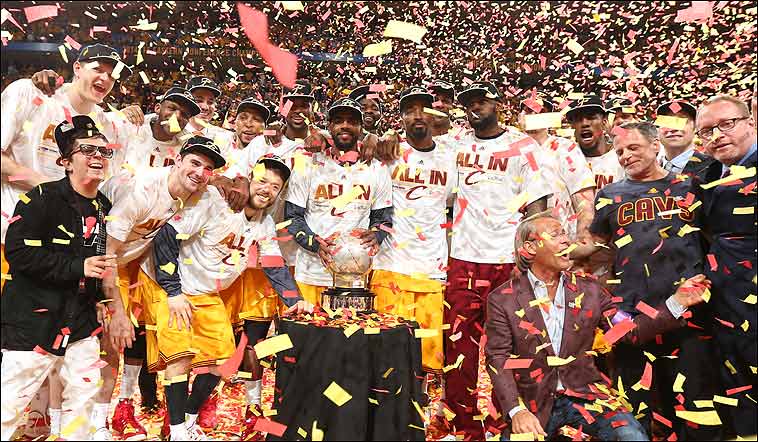
How It’s Made: A Series on Teambuilding, Part I
2016-04-29
[Editor’s Note: Please welcome back RC Kim to the blog with his first piece as a contributor. RC (aka Mac) corresponded with Tom and Nate last year in a series called The Hinkie Letters (republished last month) and is a long time member of the commentariat.]
Not enough credit is given to David Griffin for the job he has done in putting together a credible championship-caliber team around LeBron James in very short order, without sacrificing draft picks, future stars or really any assets of note other than Dan Gilbert’s cash. Notwithstanding his second place finish in the Executive of the Year voting last year — which likely no one outside the immediate Griffin household even noticed was a thing — Griffin gets surprisingly little positive press for the job he has been doing, even though the trials and tribulations of our beloved Cavs down to the individual Tweet level otherwise serves as daily fodder for the chattering masses. The only time Griffin was really in the news this season was when he fired David Blatt, and even then it seemed like he was only mentioned so talking heads could argue about whose hatchet man he really was, anyway — LeBron’s, Ty Lue’s or Dan Gilbert’s. Indeed, if one were a space alien who followed the Cavs during the past two seasons by intercepting the mainstream sports media’s Internet traffic, one would assume that the Cavs’ GM was someone named LeBron “Klutch” Paul and this David Griffin guy fetched his coffee and sent out his faxes (by the way I would really like to hang out with that space alien, so I sure hope he reads C:tB).
I suspect the mainstream sports media dismisses Griffin as a significant front office talent because, to paraphrase something former Texas governor Anne Richards said about our 43rd President, he is seen as having had the good front office fortune to be born on third base and is thus unworthy of being credited for a triple. After all, Griffin was gifted LeBron, Kyrie and Andrew Wiggins on a silver platter, right? Everybody wants to play with LeBron anyway, right? “All” Griffin “had to do” was trade Wiggins and flotsam left over from The Chris Grant Error to the Timberwolves for Kevin Love. Add some complementary pieces, who would practically sign themselves to chase rings with LeBron and voila, instant championship contender. Give Griffin credit? I can hear the experts now, “why, Griffin should be counting his blessings that he draws a paycheck for doing practically nothing! Who can possibly compare the rote moves of Griffin with the complex machinations of truly talented executives like Sam Presti or Daryl Morey, who had to go out and get their own superstars and were not merely gifted the best player in the world by, literally, royal fiat? Presti took a bad, aging team with limited assets in the bank and built them into a contender in short order through the draft; Morey took a mediocre veteran team and remodeled it into a championship contender with an all-new roster without ever resorting to being bad. Now these guys are ELITE team building general managers!”
You will not get any argument from me that those guys are indeed elite team builders and two of the best GMs in the league, period. However, are they elite championship team builders? Are they indeed any better than Griffin at crafting a top team once it actually has stars? Do they have the patience, focus and humility to refine the roster through careful, incremental moves? My conclusion is “not as far as I can tell.” Look, Griffin may not be the guy we want collecting assets for us once LeBron retires. Right now, we have no way of knowing since he got a turn-key superteam to work with. However, as lucky as Griffin may have been to get the Cavs job when he did, the Cavs may have lucked out to promote Griffin to the position when they did. The former is more obvious, in the same way that everyone knows that you shouldn’t bring a knife to a gunfight, but the converse may be equally true, even though people think about it less. It is actually just as bad an idea to bring a gun to a knifefight. Savage fighting at close quarters is about precision, not firepower. Presti and Morey are guns, but Griffin is a knife, and getting to the point of being able to win a title takes a down-and-dirty knife fighter.
So, in what hopefully will be a four-part series, I would like to compare the major moves made by David Griffin since the LeBron-Kyrie-Love triumvirate came together for the Cavs in July 2014 with: (1) the moves made by Daryl Morey and the Houston Rockets since acquiring James Harden and Dwight Howard in 2013; (2) Sam Presti and the Oklahoma City Thunder as of the brief, shining moment in 2012 when they had Kevin Durant, Russell Westbrook, Serge Ibaka and James Harden; and (3) just for fun, what Doc Rivers has wrought upon the Los Angeles Clippers since he took over as coach in 2013 of a team featuring Chris Paul, Blake Griffin and DeAndre Jordan (hint, he traded for his son). I place moves into the four categories and try to open on how well they worked or didn’t. The categories being Hits (good), Misses (bad), Neither (uh, neither) and SUCSSUC, (which stands for “Shaking Up Crap for the Sake of Shaking Up Crap”, and is pronounced “suck suck” in honor of an infamous CtB commenter). The SUCSSUC moves were done for no apparent reason other than ADHD.
(Note: I am not going to compare the Griffin regime with the Spurs and Dubs. No Spurs, because it would take me weeks to chronicle twenty solid years of moves by R.C. Buford and Gregg Popovich (look how long THIS is!) and you wouldn’t read it anyway. No Dubs because Bob Myers has Jerry West pulling his strings behind the curtain, and I refuse to give anyone credit for his personnel moves when he has the counsel of NBA Obi-Wan Kenobi to guide him.)
So first, let’s take the Wayback Machine to June 2014 (which makes we middle-aged types look around in bewilderment and stammer, “what, you mean it isn’t June 2014 now? Why am I wearing these pants??”), and consider the major moves Griffin has made since the Cavs got LeBron and traded for Kevin Love in the summer of 2014. I am not discussing the David Blatt hire earlier that summer or the draft, since the arrival of LeBron obviously represented a sea change from whatever was planned before then, even that same summer. My goal is to judge Griffin solely on his notable transactions once his superstar core was in place, which would be as follows:
Control Group: David Griffin and the Cleveland Cavaliers (2014~)
Superstars: LeBron James, Kyrie Irving, Kevin Love.

Season 1
Preseason: signs Anderson Varajao to an extension. Adds Mike Miller, James Jones and Shawn Marion via free agency, acquires Brendan Haywood via trade, drafts Joe Harris.
Trade deadline: trades for J.R. Smith, Timofey Mozgov and Iman Shumpert. Dion Waiters and a bunch of (other) scrubs are sent packing.
Post-trade deadline: signs Kendrick Perkins after he is bought out by the Utah Jazz.
Hits: signing JR, Mozgov, Shump, trading Waiters.
Misses: signing Marion, Miller, signing Andy to an extension.
Neither: drafting Harris, signing Perkins.
SUCSSUC: trading for Haywood to pocket a TPE, maybe?
Season 2
Preseason: exercises team option on Mozgov. Drafts Sir’Dominick Pointer, Rakeem Christmas and Cedi “Handsome Turkish Luke Walton” Osman (yay!). Trades draft rights of Tyus Jones (boo?) to Wolves. Floats the dead bodies of Marion, Miller, Haywood and Perkins down the River Anduin. Re-signs LeBron, Love, JFJ, Shump, JR and Delly. Signs Mo Williams and Richard Jefferson. In October, after a fairly pointless Latin American standoff re-signs TT.
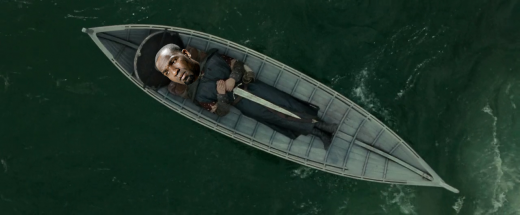
Trade deadline: swaps some combination of Andy, Joe Harris and Jared Cunningham, cash and second round picks for Channing Frye. It happened recently, you know the details as well as I do.
Post-trade deadline: signs Jordan McRae and Dahntay Jones to round out the roster for the playoffs.
Hits: re-signing LBJ, Love, Shump, JR, Delly and TT, signing RJ. Trading for Frye. Getting rid of Marion, Miller, Haywood, Perkins and (sorry Nate) Andy.
Misses: signing Mo.
Neither: exercising the team option on Mozgov, the draft moves generally, signing JFJ, McRae and D. Jones, trading Harris and Cunningham.
SUCSSUC: none, really.

Comments: I would use words like “focused”, “targeted” and “efficient” to describe Griffin’s moves. Griffin rarely makes moves just for the sake of making them. He goes out and gets players to fit specific needs, doesn’t have a big ego about always “winning” trades, and does a really good job knowing who to keep and who to let go. He shows excellent restraint in not making three big mistakes – one, taking flyers to add more “stars” rather than building around the ones he already has, two, mortgaging future assets to win now, and three, SUCSSUCing. The team is clearly better than it was in August 2014, is positioned to be even better going forward so long as LeBron remains in his prime, and this, in my opinion, is largely due to Griffin’s excellent editorial skills in composing the roster. It is also worth noting that some of Griffin’s less productive moves, primarily signing washed-up veterans like Marion, Mike Miller and JFJ, were probably at least in part (by which I mean “I assume, entirely”) at the behest of the King and his camp, and they didn’t at the end of the day do much harm, even if they also didn’t do much good. Hey, it’s more than Danny Ferry can claim in his failed attempts to make roster moves appeasing LeBron.
Now let’s turn to . . .
Case Study A: Daryl Morey and the Houston Rockets (2013~)

Superstars: James Harden and Dwight Howard, the ghosts of Chris Bosh and Carmelo Anthony (as we shall see).
Season 1
Preseason: drafts Isaiah Canaan. Trades Thomas Robinson for Kostas Papanikolau and Mirko Todorovic. Signs Omri Casspi, Aaron Brooks, Marcus Camby, Ronnie Brewer and Robert Covington. Waives Camby.
Trade deadline: trades Aaron Brooks for Jordan Hamilton. Waives Brewer.
Hits: none (seriously, none).
Misses: signing Brooks, signing and waiving Brewer and Camby.
Neither: drafting Canaan. Signing Casspi and Covington.
SUCSSUC: trading Robinson for Papanikolau and Todorovic. Trading Brooks.
Season 2
Preseason: lets Chandler Parsons walk. Trades Jeremy Lin to the Lakers, who get a first-round pick for their troubles (becomes Larry Nance Jr. in 2015). Trades Asik and Casspi to the Pelicans for a first-round pick and three scrubs. Strikes out on centerpiece strategy of signing Chris Bosh and/or Carmelo Anthony (neither of whom, it should be noted, ever showed strong interest). Trades for Trevor Ariza and Jason Terry. Drafts Clint Capela and Nick Johnson. Signs Jeff Adrien, Joey Dorsey, Tarik Black and Ish Smith. Waives Robert Covington and Ish Smith.
December: trades some scrubs, three second round picks, the rights to an Euro player who will never play in the NBA and cash in a trade facilitated by the Sixers (this becomes a theme, as you will see) and acquires Ronny Turiaf, Alexey Shved and Corey Brewer from the Wolves. Waives Black. Adds Josh Smith after he is bought out by the Pistons, because SVG would rather pay him to play for another team than keep him around (this becomes a theme, as you will see).
Trade deadline: Acquires K.J. McDaniels from the Sixers who extract the king’s ransom of a fellow scrub in Canaan and a second round pick (this becomes a theme, as you will see). Trades Alexey Shved and two second round draft picks to the Knicks for Pablo Prigioni.
Hits: adding Trevor Ariza and Josh Smith, trading Asik for a first rounder from Pelicans, drafting Capela.
Misses: kicking Parsons to the curb, betting the farm on signing another superstar and striking out, waiving Covington.
Neither: trading Lin, signing Adrien and Dorsey, drafting Johnson.
SUCSSUC: Signing and waiving Black and Smith, trading Canaan for McDaniels, trading Shved for Prigioni.
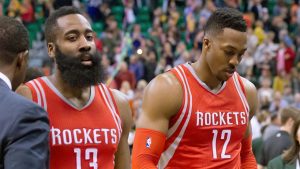
Season 3
Preseason: drafts Sam Dekker and Montrezl Harrell, re-signs Terry, Brewer and McDaniels, trades Joey Dorsey, Nick Johnson, Kostas Papanikolau, Prigioni and a first round pick to the Denver Nuggets for Ty Lawson and a second round pick, signs Marcus Thornton, signs and waives Chuck Hayes. Lets Josh Smith leave to sign with the Clippers.
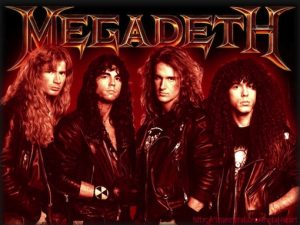
Trade deadline: trades Maarty Leunen (who I think is the guitarist for Megadeth who also lives in Tokyo, anyway overseas guy), and reacquires Josh Smith from the Clippers, who also send cash to cover Smith’s salary because Doc Rivers would rather pay him to play for another team than keep him around. Trades D-Mo and Marcus Thornton and a second round pick in a three way deal to get the rights to Chu Maduabum and a conditional first-round pick from Detroit. The deal is facilitated by the Sixers, who take on Joel Anthony from Detroit in order to extract a second round pick from Houston (this had become a theme, as you may have seen). The deal is voided and D-Mo and Thornton are sent back to the Rockets. Something has since happened to the Sixers’ front office guy as well, apparently.
Post-trade deadline: Waives Thornton and Lawson. Signs Andrew Goudelock and Michael Beasley.
Hits: Letting Smith leave, waiving Lawson.
Misses: Reacquiring Smith, trading for Lawson, re-signing Terry and Brewer, failing to trade D-Mo.
Neither: drafting Dekker and Harrell, re-signing McDaniels.
SUCSSUC: signing, trading and waiving Thornton, signing Beasley and Goudelock, signing and waiving Hayes.
Comments: Just to be very clear to the Rockets fans who may visit this site and read this article, I think Daryl Morey is an extremely talented GM who has done great things for the Rockets. I am not arguing that all things being equal and given a team that needs a lot of help, Griffin would be a better GM than Morey. If the Cavs hired Morey in 2021 I would be very happy. However, it is difficult not to acknowledge that the Rockets are actually worse off, personnel-wise, than when they got Harden and Howard three years ago. It is difficult to say that his strategy of pursuing Bosh and/or Melo excuses this, and it is merely hindsight on my part that is 20/20, because if Morey had landed Bosh or Melo that would have been a disaster anyway for the Rockets, given their precarious health and limited availability during the past two seasons.
Compared to Griffin, Morey has made a heck of a lot more moves, but it is unclear when you line them up on a ledger that he made any more good ones. He did, however, make a lot of bad moves, pointless moves and moves just to make moves. That is to say, he did really good things like get Ariza and draft Capela, but he regularly SUCSSUCed a lot worse than Griffin. This is fine if you are in asset accumulation mode, but I posit that when you have your franchise cornerstones in place and are trying to build a championship contender around them, this kind of scattershot approach may very well hurt the team more than it helps. That certainly appears to have been the case for the Rockets.
I can’t help but wonder if what makes Morey a really fine GM when you are in the process of putting together a decent team — his tireless wheeling and dealing, his constantly being in asset accumulation mode, his relentless star-chasing — makes him a less desirable front office executive for a franchise looking to stay on top once it has gotten there. What if he had just kept guys like Lin and Parsons rather than trying to get someone “really good” instead? For that matter what if he had recognized the talent on his own team before he jettisoned them to chase after other people’s more established names (cough*KyleLowryGoranDragic* cough)? Like a certain famous buddy of his, Morey is creative, prodigiously productive and great at a lot of things but truly terrible at one thing, editorial self-discipline. That may be OK for his buddy, (after all, content is king on the Internet) I can’t help but wonder if it is not a fatal flaw for a GM looking to compete consistently for championships.
Coming soon – Part 2, Case Study B – Sam Presti and the Oklahoma City Thunder

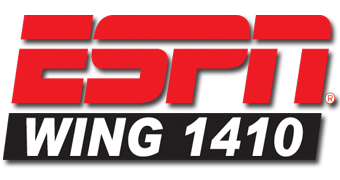

Playing point guard tonight for the LA Clippers: Rocky Rivers.
That was really an impressive, gutsy performance by Rivers. I’m not going to dog on him ever again.
This is why I love the NBA playoffs. Wow! DWade.
Plus Purple ShirtMan!
Wade. Clutch. Great performance.
Now DWade decides to start taking (and hitting) threes…
Playing the role of Darth Vader there.
too much second chances for heat, and now they goin win the game and series, knew Hornets couldnt handle the pressure
and fadeaway jumpers, clutch performance after having no points in the third
Wade doing everything for Miami #vintage
reason why Charlotte lost ? no one else showed up on offense besides Kemba and Al (22-44), rest of team 10-32 , heat +15 on the boards, 10 blocks
Star Wars theme playing for the Hornets.
Kemba is a one-man wrecking crew right now… 37 points!
Nice layup by Kemba Walker.
Good for him. And, oh, good luck with that. Unless they start getting “trades” like Gasol for a song.
Luke Walton just agreed to be the next coach of the Lakers…
These are some great defensive teams in the eastern conference playoffs, but it just doesn’t seem like they would have the offensive firepower to keep up with the Cavs.
Which teams have great defenses?
Great stuff, Mac! Man, I’d hate to be a Rockets fan…
Anyone else question the signings of Harden or Howard? This is hindsight talking here, but I think that neither one of them is a team leader. Though talented, they are both followers.
This was a really clever approach to the Cavs playoff layoff. Well done sir. There’s a reason Cavs the Blog will be sweeping the SAVEUR Blog Awards this year.
I am not sure I disagree with anything EXCEPT the idea that you need to tame your criticisms for Rockets’ fans. Daryl Morey has had one winning offseason. He has been a $%~+show in two of them. I would not be holding back in my criticisms of him if I were a rockets fan, and the Mchale firing was the worst firing since Monty Williams.
D. Jones on Cavs.com “My impression of this team is that they’re extremely focused with a ‘family’ atmosphere – these guys really like each other, they like competing with each other, they like competing against each other,” concluded Jones. “They practice hard, they play hard, they work hard in the weight room and take care of their bodies. Our (weightlifting) breakfast club has been amazing.
Did you see MJ over Ehlo ranked greatest playoff moment on ESPN?
Thanks for the article.
I don’t think I’d put the TT, Delly, and JR signings in ‘hits’.
We had to overpay TT and we didn’t secure Delly to a long term deal. Now Delly’s going to cost us more and we might not be able to keep him. JR situation is similar too – next year he’s going to be expensive but essential to keep around.
Nope. TT, after this year, will be right in line with other players of his ability, it was not an overpay. JR was a great signing and Delly has turned out to be fantastic.
Do you actually read an entire post? The Other Jason says Delly and JR indeed are essential. The reason they are not “hits” in his view is because we didn’t secure both to longer-term contracts. I believe it was Windy who said Delly wanted three years for around $12-14 million total before this year strated, and the Cavs declined. Now Delly will probably get $8-10 million and more power to him.
TheOther Jason assumes we are going to lose those guys. I assume Griffin gets them signed. So I don’t consider them gone.
I think that’s right. Griffin has done a good job knowing who to keep and who to let go. I think he will find a way to keep Delly. As for JR I don’t think you ever lock up JR. He is not a player you want getting too comfy with his situation.
There’s a counterargument that keeping Delly on a short term contract motivated him to improve as much as he has.
All fair points. It’s hard for me not to consider JR and TT good signings when they are winning us playoff games, and that is the basis on which I judge Griffin’s moves. TT in particular grabbed all of the offensive rebounds against the Pistons. I agree he is overpaid but it’s not my money and the Cavs will never have cap space anyway so I can’t ever blame Griffin for spending Dan Gilbert’s money. As for Delly, I agree it would have been even better if Griffin had signed him to a longer deal but I feel like if… Read more »
Griffin rules at teambuilding.
Morey did a great job up until this year. I mean, he made a team that didn’t have to bottom out that made it to the conference finals last year. And going forward he has cap space and a true superstar in Harden. Morey’s a good GM who screwed up a bit this year.
“That is to say, he did really good things like get Ariza and draft Capela, but he regularly SUCSSUCed a lot worse than Griffin.”
Fascinating article, RC. The above sentence and usage of SUCSSUC was very amusing!
“Like a certain famous buddy of his….” Who is this famous buddy of his?
Bill Simmons, I’m guessing.
Ah, thanks.
Nice piece, RC. I will say that Daryl Morey is fantastic at acquiring raw talent and assets, and terrible at building around it. The Spurs are great at acquiring raw talent and developing them within a team environment. I mean could Kyle Anderson have gone to a better team to develop him and get the most out of his unorthodox skill set? But the Spurs always put put their priorities like so character > fit > talent. Meanwhile, Morey lost everything that made him great in order to chase stars. He forgot that character and fit matter. One thing that… Read more »
First off, Welcome to the team RC. Super in depth stuff, really interesting. What’s interesting to me with Morey is that the team managed to not be atrocious during its pursuit of Harden/superstar. If he were to start stacking the type of pre harden guys he chased before, under valued grinders and just above average talent, the team could be really competitive right away. There’s no balance with his approaches. It’s all one way.
Yeah he let a lot of guys get away. Patrick Patterson comes to mind atm
Thanks Nate, agree with all of this.
I like Morey as a GM. My main beef (as always) is more with the media and fans than the actual person doing the job… I think building a great team is equal parts luck, art and science. We used to overrate the art over the luck and science, and now we overrate the luck and science over the art, mostly because the analytics crowd doesn’t do art.
Welcome RC!